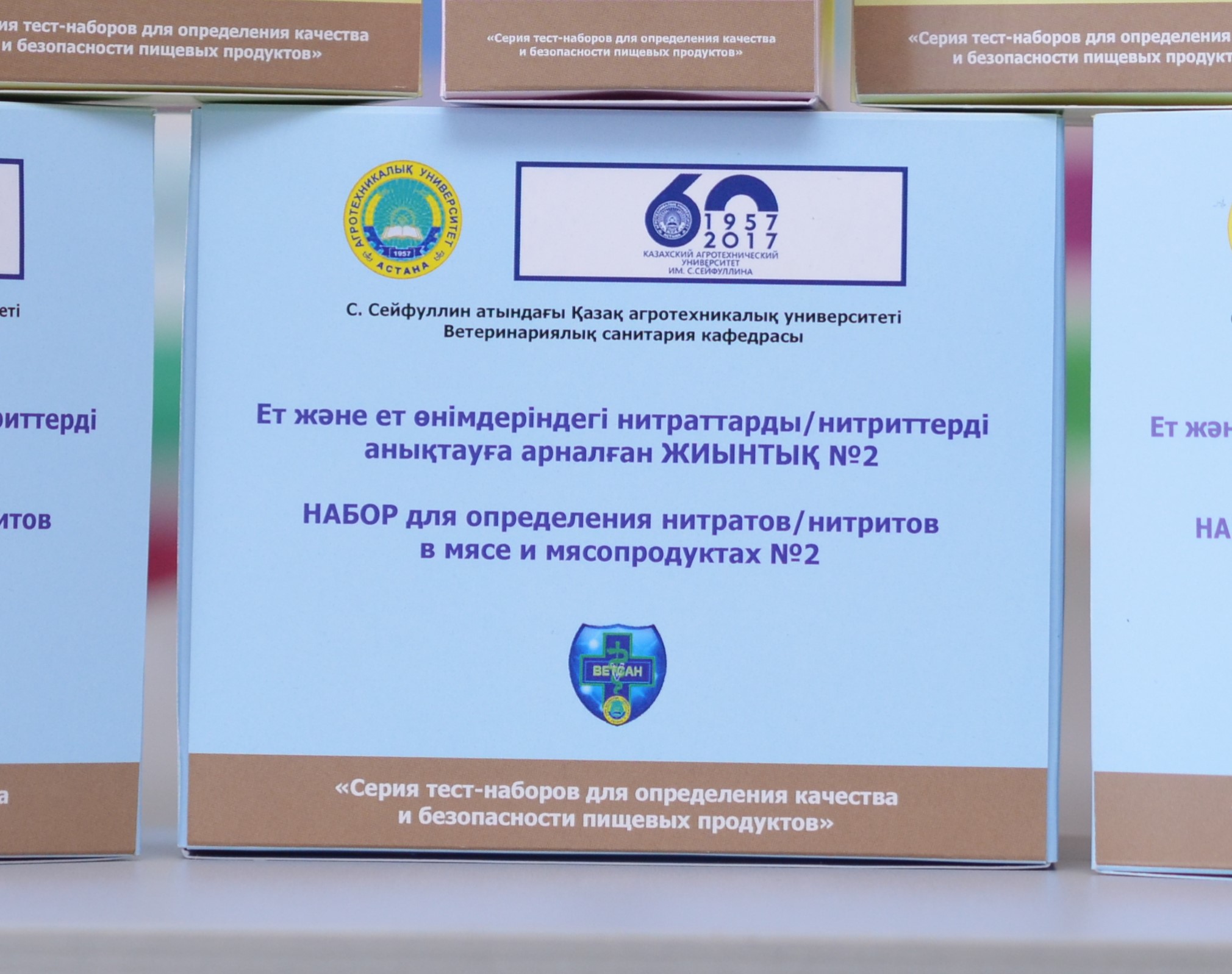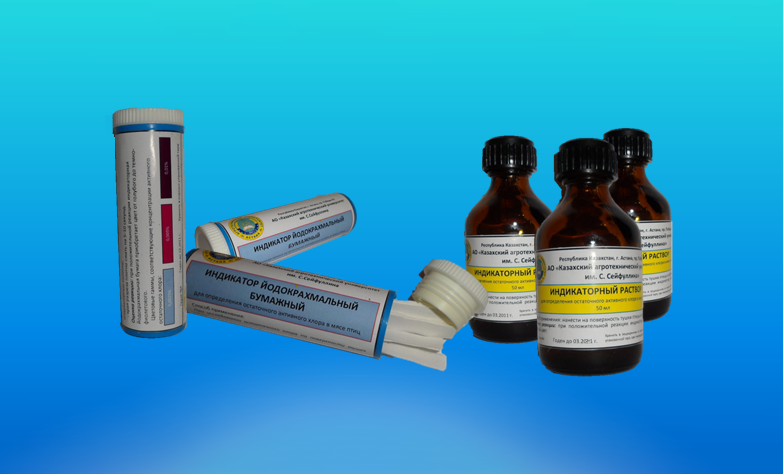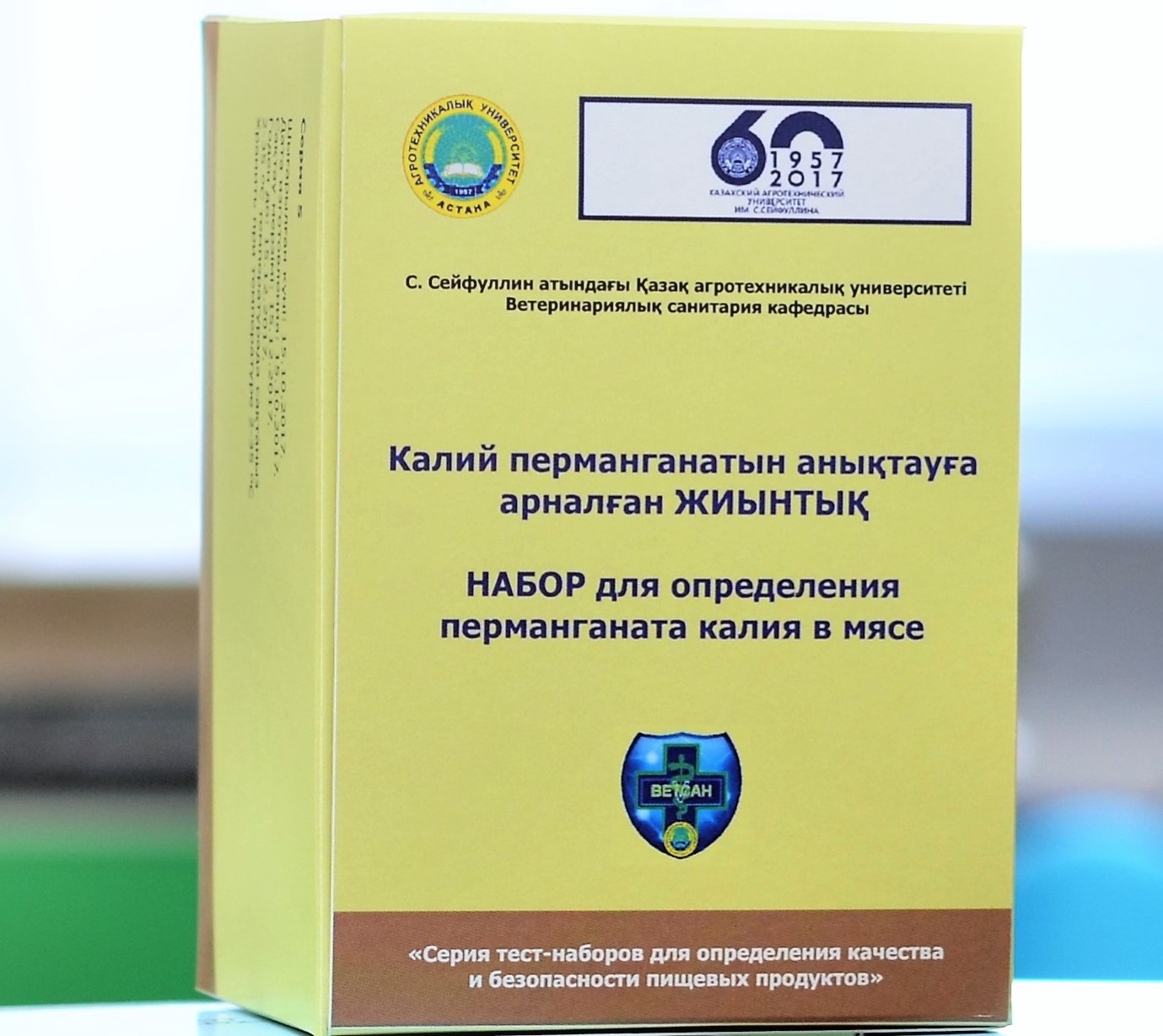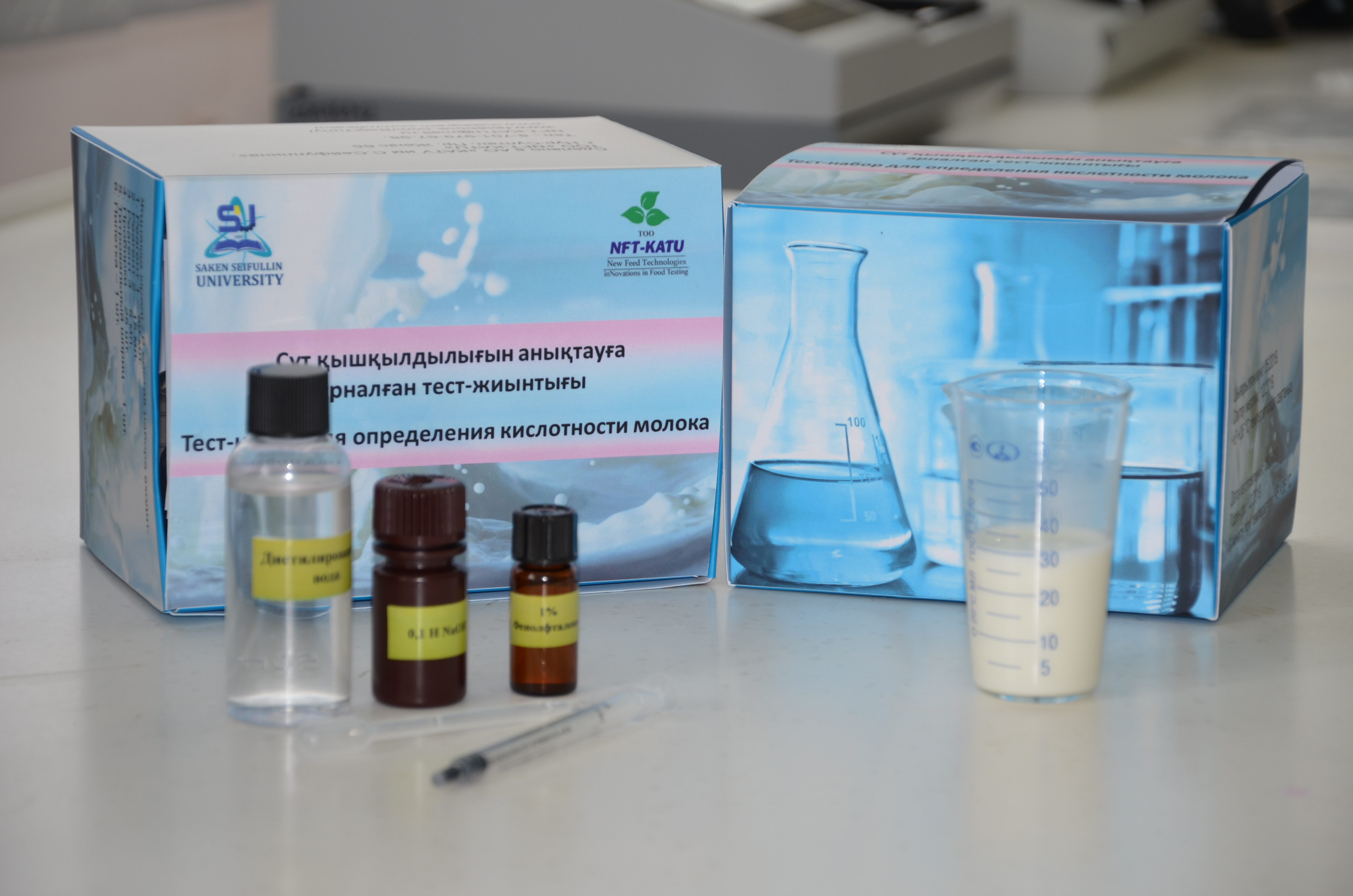
One of the most common contaminants, most often found in vegetable products, sausages, and other meat products, milk (when adulterated) are nitrates / nitrites that have a harmful effect on the human body, especially children.
Rapid qualitative, semi-quantitative, and quantitative methods for determining nitrates / nitrites in meat and meat products have been developed and test kits have been manufactured that are easy to perform since they do not require special expensive equipment.
The technical result of the developed methods is achieved by conducting a reaction that takes place using diphenylamine, which is an indicator for determining nitrates / nitrites contained in products with which sample preparation was previously carried out using calcium chloride, aluminum-potassium sulfates and potassium permanganate, or is achieved by using test kits.
A qualitative rapid method for the determination of nitrates / nitrites
The rapid method for determining nitrates / nitrites in meat and meat products is performed directly on the tested product, i.e. without sample preparation and the use of laboratory utensils, which differs from known analogues. The method can be used in the field, i.e. outside the laboratory. The reaction is carried out directly on the tested sample, by cauterizing and applying alternately extracting solutions and an indicator. As a result, in the presence of nitrites at a concentration of more than 30 mg/kg, the surface of the tested sample is colored blue. Extraction solutions are necessary for the transition of nitrates to nitrites.
Order of execution:
1. Apply a spatula, knife or other metal object heated over the fire for 4-5 seconds to the tested sample of meat or meat products (sausage products), so as to cauterize the surface.
2. On the burnt surface, alternately apply in the same volume (1-2 ml each) first a 4% aqueous solution of calcium chloride, then a 1% aqueous solution of aluminum-potassium sulfates, and then a 0.02% aqueous solution of potassium permanganate. Thus, the surface of the test sample is prepared for the indicator.
3. Apply 3-4 drops of the indicator on the prepared surface of the tested sample – 0.3% diphenylamine dissolved in concentrated sulfuric acid.
Evaluating the result:
In the absence of nitrites, the color of the sample surface does not change. As a result, in the presence of nitrites at a concentration of more than 30 mg/kg, the surface of the tested sample is colored blue.
A qualitative rapid method for determining nitrates / nitrites and test kits for its implementation (test No. 1, 2)
The rapid method and test kit for determining nitrates / nitrites contained in food products is easy to perform, since it does not require special equipment.
Test set #1
Order of execution:
1. Weigh 1 g of the granulated, homogeneous mixture of the test sample.
2. Add the tested sample to a test tube containing an extraction solution consisting of 5 ml of distilled water and 0.025 ml of 4% calcium chloride. The resulting mixture is to be intensively mixed.
3. Boil the test tube with the contents for 2 minutes and then mix the resulting extract.
4. Soak a 1/3 of a paper strip with a width of no more than 1 cm (so that it passes freely into the test tube) in the resulting extract from side 1 (as shown in Figure 1).
5. On side 2 of the paper strip, apply with a pipette 0.5 ml of a control solution consisting of sodium nitrite at a concentration of 30 mg/kg .
6. On the soaked sides 1 and 2 of the paper strip, apply 2-3 drops of the indicator solution – 0.3% diphenylamine.
The procedure of working with a set of nitrite test is shown in Figure 1.

Figure 1 – Operating procedure of the nitrite test kit
The nitrite test kit consists of the following components:
- a heat-resistant test tube with a lid containing an extraction solution consisting of 5 ml of distilled water and 0.025 ml of 4% calcium chloride;
- a pipette;
- a bottle with a control solution of sodium nitrite at a concentration of 30 mg/kg;
- indicator solution (0.3% diphenylamine);
- a strip of filter paper, or other prepregable material without chemical substances.
The result of the nitrite test shows that the higher the concentration of nitrites in the test sample, the more intense the blue color is, up to dark blue.
Evaluating the result:
Positive – a blue color appeared on sides 1 and 2.
Negative – on side 1 there is no staining, on side 2 there is a blue color.
The test does not work – there is no staining on sides 1 and 2 (you need to replace the test).
Test set #2
Order of execution:
1. Weigh 10 g of the tested sample and grind in a mortar or laboratory mill until a homogeneous mixture is obtained.
2. Add 1 g of the granulated sample to a test tube containing the extraction solution. The resulting mixture is to be shaken.
3. Boil the test tube with the contents for 2 minutes and then mix.
4. Add the liquid part of the extract to well 1 of the nitrate test to the mark (Figure 4).
5. Add a control solution to well 2 of the nitrate test.
6. Press on the center of the nitrate test, so that there is a click.
The procedure of working with a set of nitrate test is shown in Figure 2.

Figure 2 – Operating procedure of the nitrate test kit
The nitrate test kit has the following configuration:
- a heat-resistant test tube with a lid containing an extraction solution consisting of 5 ml of distilled water and 0.025 ml of 4% calcium chloride – 1 pc.
- a plastic pipette – 2 pcs.
- a test tube with a control solution consisting of a solution of nitrates at a concentration of 100 mg/kg – 1 pc.
- a nitrate test – 1 pc.
Evaluating the result:
Positive – a blue color appeared in windows 1 and 2.
Negative – in window 1 there is no coloring, in window 2 there is a blue color.
The test does not work – there is no staining in windows 1 and 2 (you need to replace the test).
The concentration of extracting solutions and the indicator in the test kits is calculated in such a way that a color reaction occurs when the concentration of nitrites in the test sample is more than 30 mg/kg, which is higher than the permissible norm provided for in cooked sausage products for feeding pre-school and school-age children, according to TRCU 034/2013 "On safety of meat and meat products".
A semi-quantitative method for the determination of nitrates / nitrites
The semi-quantitative method is carried out by comparing the color of the hood after adding an indicator with a color scale.
Order of execution:
1. To extract nitrates and convert them to nitrites, it is necessary to weigh 10 g of the granulated sample (minced meat) and add it to a conical heat-resistant flask with the addition of 50 ml of distilled water and 0.25 ml of 4% calcium chloride.
2. Boil the contents of the flask for 5 minutes, and then filter through a paper filter.
3. In the resulting filtrate, add 10 drops of a 1% solution of aluminum-potassium sulfates and 15 drops of a 0.02% solution of potassium permanganate. Thus, the test solution is obtained.
4. In a porcelain cup, first add 200 mcl of 0.3% diphenylamine solution, and then 6 drops of the test solution. The resulting mixture is to be intensively mixed.
Evaluating the result:
In the presence of nitrites at a concentration of 100 mg/kg, the color of the mixture changes to pale blue. The higher the concentration, the more intense the blue color, up to dark blue, as shown in Figure 3.

Figure 3 – Indicator scale of nitrite concentration, mg/kg
A quantitative method for the determination of nitrates / nitrites
For quantitative measurement of the concentration of nitrates / nitrites in the tested product, it is necessary to measure the optical density of the extract of the test sample.
Order of execution:
1. Build a graded scale. To do this, pre-prepare the known concentrations of potassium nitrate (KNO3): 100, 200, 400, 600, 800, and 1000 mg/kg. For a more convenient and rational use of reagents, the standards can be prepared as follows: add 5, 10, 20, 30, 40 and 50 mg of KNO3 to the test tubes, add 1 ml of distilled water to each tube, gradually stirring. Each solution is to be thoroughly mixed with pre-prepared 50 g of minced meat, in which there are no nitrates. From the standard samples prepared in this way, select 10 g of minced meat and conduct the course of research as described above from the first to the fourth point.
2. Measure the optical density. To do this, select 200 mcl from each resulting mixture and add it to the wells of the tablet, measuring with a filter of 450 nm. As a result, the optical density data of the known concentrations of nitrates contained in minced meat will be obtained, which will be compared with the studied samples.
The data is taken from the monograph: Modern aspects of quality control and food safety. Balji Yu.A., Adilbekov Zh.Sh – Saint-Petersburg: Lan, 2019. - 216 p. https://e.lanbook.com/book/116370


